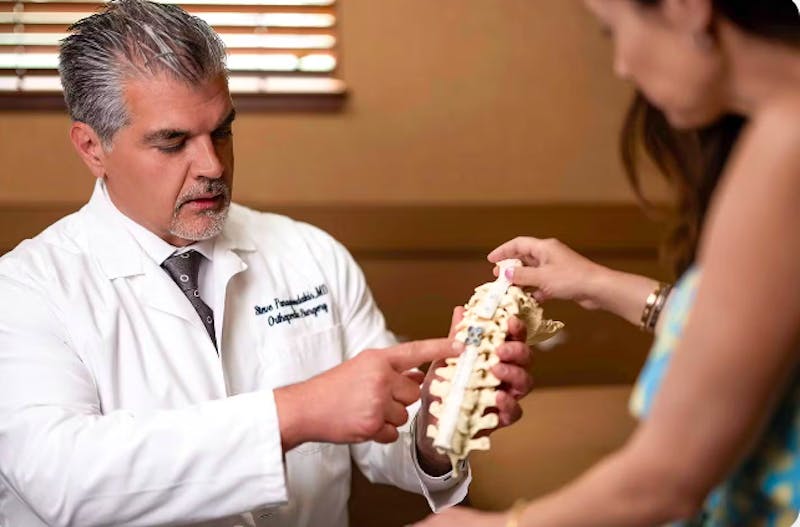
As a spine surgeon, one of the most critical conversations we have with patients is about the potential need for revision spine surgery. While primary spine surgery aims to alleviate pain and restore function, there are situations where additional intervention becomes necessary. This blog will explore what revision spine surgery entails, why it might be needed, and how we work together to ensure the best possible outcome.
What Is Revision Spine Surgery?
Revision spine surgery refers to a follow-up procedure performed after an initial spine surgery. Its purpose is to address complications, correct problems that have arisen since the first surgery, or improve the outcome of the initial operation.
This type of surgery can involve removing hardware, addressing scar tissue, correcting alignment issues, or stabilizing the spine further. While it can be more complex than the original surgery, advancements in surgical techniques and technology have significantly improved outcomes.
Why Is Revision Surgery Needed?
There are several reasons why revision spine surgery may become necessary, including:
1. Persistent or Recurrent Pain
• If pain persists or returns after the initial surgery, it may indicate issues such as incomplete decompression of nerves, hardware failure, or adjacent segment disease (degeneration of spine levels near the surgical site).
2. Non-Union or Failed Fusion
• In spinal fusion procedures, the goal is for the vertebrae to fuse into a single solid bone. When this doesn’t happen (a condition called pseudoarthrosis), revision surgery may be required to achieve a successful fusion.
3. Hardware Complications
• Implants like rods, screws, or cages can loosen, break, or shift, causing discomfort or limiting the success of the surgery.
4. Scar Tissue Formation
• Scar tissue around nerve roots can sometimes lead to ongoing nerve irritation, requiring surgical intervention.
5. Infection
• Postoperative infections, although rare, may necessitate revision surgery to remove infected tissue and hardware and stabilize the spine.
How to Minimize the Need for Revision Surgery
While some cases of revision surgery are unavoidable, there are steps patients can take to reduce the likelihood of requiring further procedures:
• Follow Postoperative Instructions: Adhering to guidelines regarding activity, physical therapy, and medication is essential for recovery.
• Lifestyle Changes: Maintaining a healthy weight, quitting smoking, and engaging in regular exercise can support spinal health.
• Collaborative Decision-Making: Opting for surgery only when it is truly necessary and exploring non-surgical options first can help ensure the best outcome.
The Road to Recovery
Revision spine surgery often requires a longer recovery period than initial surgery due to the complexity of the procedure. However, with a clear plan, dedicated rehabilitation, and a collaborative approach, most patients can achieve significant improvement in their symptoms and overall function.
If you’ve had spine surgery and are experiencing new or ongoing symptoms, know that help is available. Our team is here to evaluate your condition and provide the care you need to get back to living your best life.
Have questions about revision spine surgery? Contact us today to schedule a consultation, book online or call 732.380.1212.

